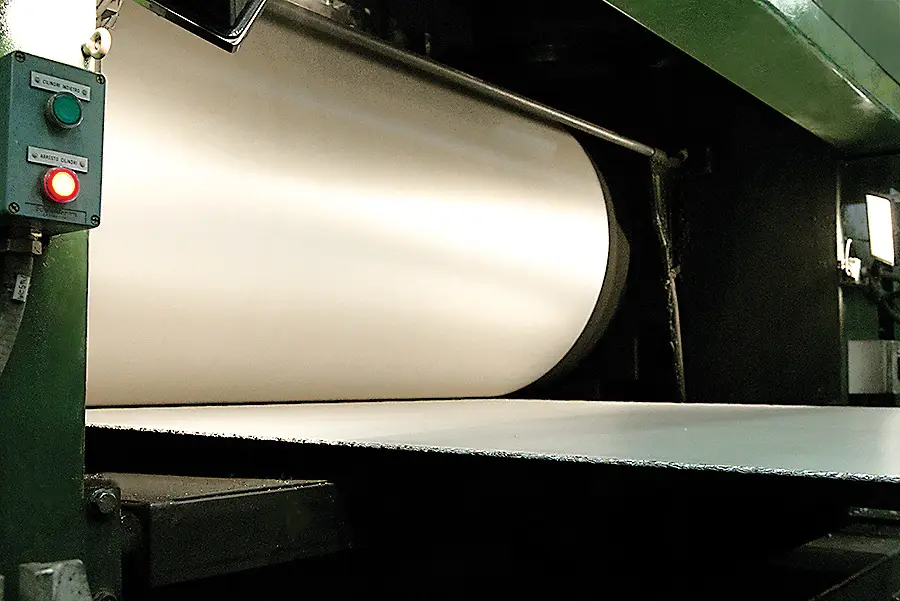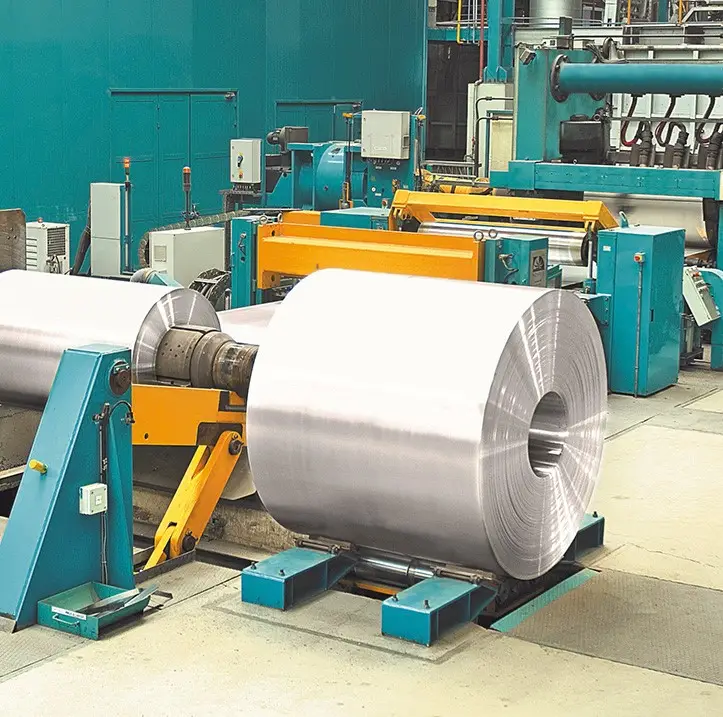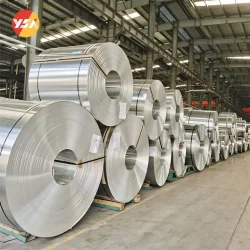Processing Technology Among Main Aluminium Foil Manufacturers
Twin-roll casting and rolling is becoming the mainstream processing route among main aluminium foil manufacturers
Currently, there are two commonly used processing routes in the industry: (1) DC casting and hot rolling; (2) Twin-roll (continuous casting and rolling).

(1) DC casting and hot rolling: First, aluminum melt is cast into flat ingots, which are then processed through steps such as homogenization, hot rolling, cold rolling, intermediate annealing, etc., to continue cold rolling into foil stock with a thickness of approximately 0.4-1.0 mm (casting → hot rolling → cold rolling → foil rolling).
(2) Twin-roll casting and rolling: Compared to DC casting and hot rolling, the production process of foil stock through twin-roll casting and rolling is relatively simple. It eliminates the need for complex processes such as melting ingots, surface milling, homogenization, and hot rolling. Instead, the aluminum melt is directly poured onto two rotating casting rolls (crystallizers), where solidification and hot rolling are simultaneously completed within 2-3 seconds, resulting in plates with a thickness of 4-7 mm. Similar to hot-rolled foil stock, the cast-rolled plates also undergo a series of cold rolling and intermediate annealing processes, ultimately being rolled into foil stock with a thickness of 0.3-0.7 mm.

Twin-roll casting and rolling equipment is simple, requires less investment, and has a shorter production cycle. It eliminates multiple complex processes such as surface milling, homogenization, and hot rolling involved in the production of hot-rolled plates. Therefore, the cost of producing foil stock through twin-roll casting and rolling is significantly reduced. However, due to different cooling methods and thermal processing conditions during plate production using twin-roll casting and rolling, the internal structure of cast-rolled plates may have drawbacks such as segregation, uneven structure, and coarse grain size after annealing. This makes quality control more challenging, resulting in relatively limited application of cast-rolled plates in high-quality aluminum foil products.
Currently, the application of twin-roll casting and rolling for aluminum foil stock has gradually matured, and more and more companies are using this process to produce aluminum foil. Twin-roll casting and rolling has become the mainstream primary process for aluminum foil. After producing aluminum foil stock, it undergoes a series of rough rolling, intermediate rolling, and finishing rolling processes to achieve different thicknesses of aluminum foil, followed by final annealing. Generally, thick foil only requires rough rolling, single zero foil needs to go through rough rolling and intermediate rolling, while double zero foil and other high-precision aluminum foils require rough rolling, intermediate rolling, and finishing rolling.

The Downstream Applications
The downstream applications of the aluminum foil industry are widely distributed across various industries such as construction, household appliances, automotive, daily consumer goods, electronics, and power.
The main applications of aluminum foil include packaging, electronics, electrical appliances, construction, and transportation. Packaging aluminum foil is used in food, tobacco, personal care packaging, bottles and cans, household utensils, and more. Aluminum foil for electronics and electrical appliances is mainly used in capacitors, lithium batteries, printed circuits, LCD panel electrodes, air conditioning radiators, automotive heat exchangers, cable insulation, and more.
In the construction industry, aluminum foil is used as insulation material, decorative panels, honeycomb composite products, blinds, ventilation ducts, and more. Aluminum foil is also used in aerospace applications, such as various aircraft propellers, fuel tanks, signal shielding devices, and so on.

Aluminum Foil Production and Exports in China
Since the economic recovery following the COVID-19 pandemic in 2020, China’s aluminum exports have been steadily increasing. Particularly since 2022, abundant export profits and sufficient orders have led to a historical high in aluminum exports, with a half-year export volume reaching 3.51 million tons. Aluminum foil exports account for 21% of the total aluminum exports, driven by strong demand from countries and regions outside of China.
From January to June 2022, China’s aluminum foil exports reached 745,000 tons, also accounting for 21% of the total aluminum exports. Other countries and regions outside of China due to the lack investment in raw material processing and manufacturing, giving Chinese aluminium foil manufacturers competitive advantages.
Currently, global production of electrode foil is concentrated in China and Japan. Cost factors have led Japanese chemical conversion foil companies to exit the low-end market, and they are increasingly cooperating with Chinese aluminium foil manufacturers in the high-end chemical conversion foil market. In the mid-to-low-end market, Chinese aluminium foil manufacturers have already achieved technological breakthroughs and cost advantages. For example, Hitachi’s corrosion foil and chemical conversion foil have costs 20-25% higher than those of Chinese aluminium foil manufacturers.
Consequently, Hitachi has abandoned its in-house corrosion foil business and shifted to complete outsourcing with Chinese aluminium foil manufacturers. Chemicon and Nichicon also outsource their chemical conversion and corrosion foil production to mainland China. Furthermore, Chinese aluminium foil manufacturers have advantages in terms of management costs and labor costs.

Company Introduction
Yongsheng Aluminum Industry: Founded in 1999 in Gongyi City, Henan Province, Yongsheng Aluminum has specialized in aluminum processing for over 25 years. The product range includes series 1, 3, 5, 6, 7, and 8 aluminum alloys, with main products including 3004 aluminum sheet, 5052 aluminum plate, 3004 aluminum foil, electrolytic capacitor aluminum foil, single-zero foil, electronic foil, alloy materials, medium-thick plates, automotive aluminum plates, tape foil, and pharmaceutical packaging aluminum foil.
Our products are widely used in various industries such as printing plates, transportation, automotive manufacturing, packaging containers, architectural decoration, mechanical and electrical appliances, electronic communications, petrochemicals, and energy. The company currently has an annual production capacity of 300,000 tons of aluminum plates and foils.

Yongsheng Aluminum as a aluminium foil manufacturers in China, we focus on our core business and has achieved steady development. With accumulated technical experience, advanced equipment, and abundant market resources, the company has achieved a compound annual growth rate of over 15% in aluminum plate and foil sales since going public.
Located in Gongyi, Henan Province, the company leverages the advantages of a complete industry chain and focuses on developing high-end products. It has established a complete aluminum production line from thermal-electric-alumina-electrolytic aluminum-smelting-(aluminum profiles/hot rolling-cold rolling-foil rolling), mainly used for processing aerospace plates, automotive plates, aluminum materials for new energy vehicles, high-speed trains, power battery foils, food flexible packaging, can materials, and more.

